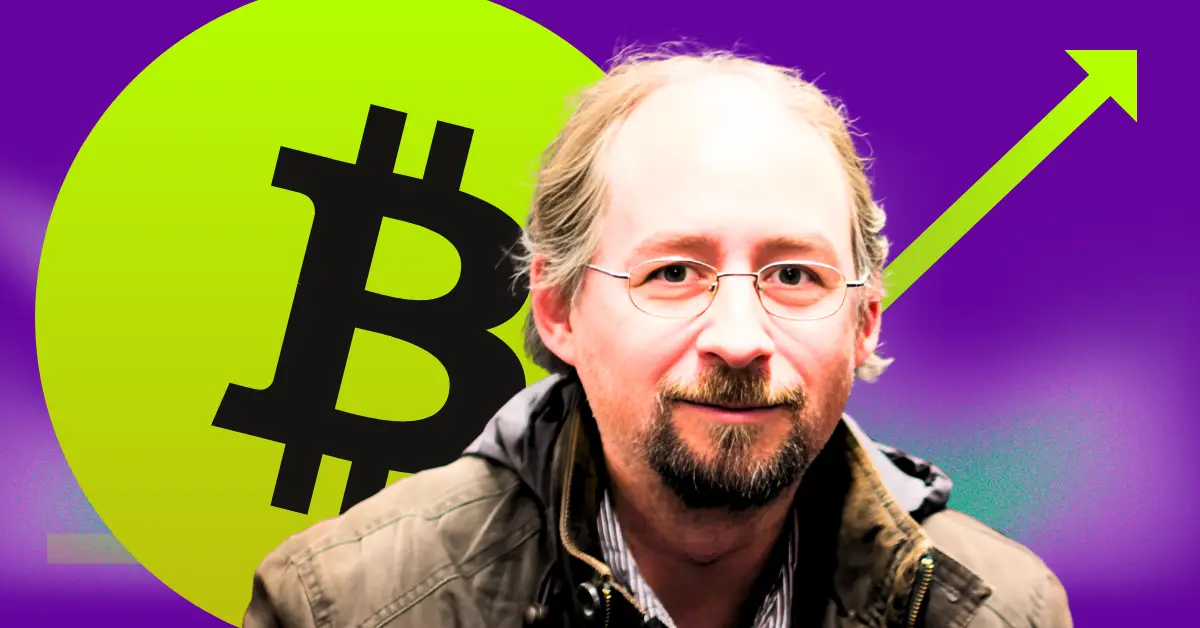Adam Back, a prominent figure in the cryptocurrency world, is known for his deep insights into Bitcoin’s potential and its future trajectory. As the CEO of Blockstream, a blockchain technology company, and a pioneer in the cypherpunk movement, Back’s predictions carry significant weight. His involvement in Bitcoin dates back to its early days, including correspondence with Satoshi Nakamoto, the pseudonymous creator of Bitcoin. This background makes his forecasts particularly noteworthy, as they are grounded in a profound understanding of the technology and its implications.
Back’s most striking prediction is that Bitcoin could reach $1,000,000 per coin. This forecast, while ambitious, is not without merit. It is based on several key factors, including Bitcoin’s scarcity, its potential to surpass gold as a store of value, and the growing institutional adoption of the cryptocurrency. To understand the rationale behind this prediction, it is essential to delve into the underlying principles that Back emphasizes.
Scarcity as a Fundamental Driver
One of the most compelling arguments for Bitcoin’s long-term value is its scarcity. Unlike fiat currencies, which can be printed indefinitely by central banks, Bitcoin’s supply is capped at 21 million coins. This hard limit makes Bitcoin a deflationary asset, meaning that as demand increases, the price is naturally driven upwards. Back believes that this scarcity will become a major driver of Bitcoin’s price, especially as institutional adoption grows and more investors recognize its value as a store of wealth.
The timeline for this prediction is around 2029, suggesting a gradual but steady increase in adoption. This timeframe aligns with the halving events, which occur approximately every four years and reduce the reward for mining new blocks. These events historically coincide with significant price increases, as the reduced supply makes Bitcoin more scarce. Back’s prediction takes into account these cyclical patterns, as well as the potential for increased institutional investment.
Market Cap Realities and Comparisons
For Bitcoin to reach $1,000,000 per coin, its market capitalization would need to reach approximately $21 trillion. While this figure is substantial, it is worth noting that gold’s current market cap is around $14 trillion. Back argues that Bitcoin could eventually surpass gold as the preferred store of value, justifying this valuation. This comparison is central to his argument, as it positions Bitcoin as a digital alternative to traditional assets like gold.
The potential for Bitcoin to outperform gold is a recurring theme in Back’s predictions. He highlights several advantages that Bitcoin has over gold, including its portability, verifiability, and divisibility. These features make Bitcoin more accessible and practical in the modern digital age. Additionally, Bitcoin’s fixed supply provides a decisive advantage over gold, which faces potential supply shocks, such as asteroid mining. If vast quantities of gold were to enter the market, it could significantly increase supply and crash prices. In contrast, Bitcoin’s supply is immutable, providing a stable foundation for its value.
Institutional Adoption and Corporate Treasuries
Another critical factor in Back’s predictions is the role of institutional adoption. He suggests that companies like MicroStrategy, which have invested heavily in Bitcoin, could contribute to a significant increase in Bitcoin’s market capitalization. When corporations allocate a portion of their treasury reserves to Bitcoin, it reduces the available supply and increases demand, driving up the price. This trend could accelerate as more companies recognize Bitcoin’s potential as a long-term store of value and a hedge against currency devaluation.
Back has even speculated that Bitcoin’s market cap could reach $200 trillion by 2030 if this trend continues. This figure underscores his belief that institutional adoption will play a crucial role in Bitcoin’s future growth. Beyond investment, the real game-changer could be when companies begin using Bitcoin as an operating asset. This could involve using Bitcoin for cross-border payments, supply chain finance, and other business operations. Such use cases would further increase demand and solidify Bitcoin’s role in the global economy.
Beyond Predictions: Adam Back’s Enduring Influence
Adam Back’s significance extends far beyond his price predictions. He is a key figure in Bitcoin’s history and a respected voice in the cryptocurrency community. His involvement in the cypherpunk movement, which advocated for the use of cryptography to protect privacy and promote individual freedom, shaped his vision for Bitcoin. He understood the potential of digital currencies to empower individuals and challenge traditional financial systems.
Back is also credited with inventing Hashcash, a proof-of-work system that is used in Bitcoin mining. This technology is fundamental to Bitcoin’s security and consensus mechanism. His contributions to the field have solidified his reputation as a pioneer in the cryptocurrency space. Despite controversies, such as claims that he might be Satoshi Nakamoto, Back has consistently denied these claims, focusing instead on his work at Blockstream and his advocacy for Bitcoin.
Conclusion: A Future Forged in Code
Adam Back’s predictions about Bitcoin’s future are not mere speculation; they are informed perspectives based on a deep understanding of the technology, its potential, and the evolving global financial landscape. His bullish outlook, while not universally shared, provides a compelling vision of a future where Bitcoin plays a central role in the world economy. Whether Bitcoin reaches $1,000,000 or surpasses gold remains to be seen, but Back’s insights offer a valuable framework for understanding the forces shaping the future of digital assets. His voice, forged in the crucible of cypherpunk ideals and tempered by years of experience, continues to resonate in the ever-evolving world of cryptocurrency. The future, as Back envisions it, is coded in Bitcoin.











